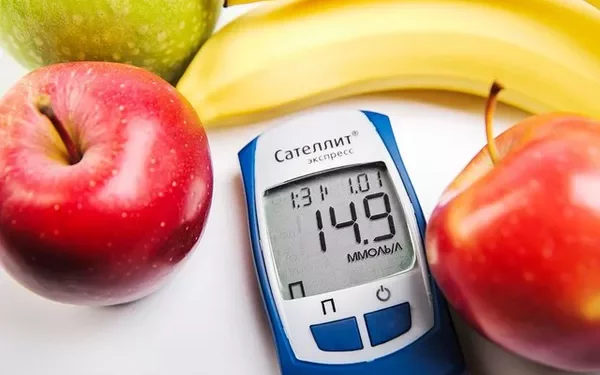Managing blood sugar levels is essential for individuals living with diabetes and those at risk of developing the condition. One of the most critical factors in maintaining blood glucose within a healthy range is diet. While there is no single food that can instantly lower blood sugar across the board, some foods can significantly impact how quickly blood glucose levels rise after eating and help stabilize them over time. Understanding which foods can help manage blood sugar levels quickly and effectively is an essential part of managing diabetes and overall health.
This article explores various foods that can lower blood sugar levels, explaining how they work in the body, the science behind them, and practical ways to incorporate them into your diet. We’ll also cover dietary habits that support overall blood sugar control and provide insights on how to balance meals to prevent postprandial (after meal) spikes in blood sugar.
Understanding Blood Sugar Levels and Insulin Response
Blood sugar, or blood glucose, is the primary energy source for the body. It comes from carbohydrates in food, which are broken down into glucose. The body regulates blood sugar levels through insulin, a hormone produced by the pancreas. Insulin helps cells absorb glucose from the bloodstream to be used for energy or stored for later use.
However, in individuals with diabetes, the body either does not produce enough insulin or cannot effectively use the insulin it produces. As a result, blood sugar levels can rise to unhealthy levels, leading to both short-term and long-term complications. For people with diabetes, controlling blood sugar levels is critical to preventing these complications.
After eating, blood sugar levels typically rise. The amount and speed at which blood glucose levels increase depend on the type of food consumed, the amount, and the individual’s overall insulin sensitivity. To manage blood sugar levels, it’s essential to focus on foods that not only prevent blood sugar spikes but also promote healthy glucose metabolism.
The Role of Food in Blood Sugar Management
The foods we eat have a significant impact on how our blood sugar levels fluctuate. Some foods cause rapid spikes in blood sugar, while others help slow down the absorption of glucose, keeping levels stable over time. In addition to the glycemic index (GI), which measures how quickly a carbohydrate-containing food raises blood sugar, other factors like fiber content, protein, and fat influence how food affects blood sugar levels.
Foods that lower blood sugar typically have low to moderate glycemic indices, contain fiber, protein, or healthy fats, and offer a host of beneficial nutrients. In addition to their immediate effects, these foods may help reduce insulin resistance, improve insulin sensitivity, and promote overall metabolic health.
1. Leafy Greens
Leafy green vegetables, such as spinach, kale, and Swiss chard, are some of the best foods for managing blood sugar levels. These vegetables are low in carbohydrates and high in fiber, which helps regulate blood glucose. Fiber slows down the absorption of sugar into the bloodstream, preventing rapid spikes in blood sugar after meals.
Leafy greens also contain a variety of nutrients, including magnesium, which has been shown to improve insulin sensitivity. Additionally, their high antioxidant content helps reduce inflammation, which can contribute to insulin resistance.
How Leafy Greens Help Lower Blood Sugar:
- High in fiber, which slows glucose absorption
- Rich in antioxidants that help reduce inflammation
- Provide magnesium, which can improve insulin sensitivity
2. Cinnamon
Cinnamon is not just a flavorful spice but also a powerful ally in the battle to control blood sugar levels. Studies have shown that cinnamon can improve insulin sensitivity, allowing the body to use insulin more effectively. This can lead to better blood sugar control. Additionally, cinnamon contains compounds that mimic insulin’s actions, helping the body process glucose more efficiently.
Incorporating cinnamon into meals may help lower blood sugar levels after eating, especially when consumed with foods rich in carbohydrates. It’s also an excellent addition to warm beverages like tea or coffee and can be sprinkled on yogurt, smoothies, or oatmeal.
How Cinnamon Helps Lower Blood Sugar:
- Enhances insulin sensitivity
- Mimics insulin’s actions in the body
- Helps regulate blood sugar levels after meals
3. Apple Cider Vinegar
Apple cider vinegar (ACV) has gained attention for its potential to lower blood sugar levels, particularly after meals. Research has shown that consuming a small amount of ACV before or during a meal can help prevent postprandial blood sugar spikes. The acetic acid in vinegar slows the conversion of carbohydrates into sugar and improves insulin sensitivity.
For optimal results, try mixing 1-2 tablespoons of apple cider vinegar in a glass of water and drinking it before or during a meal. ACV can also be used as a salad dressing or added to other dishes for a tangy flavor.
How Apple Cider Vinegar Helps Lower Blood Sugar:
- Contains acetic acid, which helps reduce blood sugar spikes
- Improves insulin sensitivity
- Slows carbohydrate absorption
4. Nuts and Seeds
Nuts and seeds, such as almonds, walnuts, chia seeds, and flaxseeds, are nutrient-dense foods that can help stabilize blood sugar levels. They are rich in healthy fats, fiber, and protein, all of which contribute to a slower and more sustained release of glucose into the bloodstream.
Additionally, nuts and seeds have a low glycemic index, meaning they do not cause rapid spikes in blood sugar. The healthy fats in these foods also help improve insulin sensitivity, making them an excellent choice for those looking to manage blood sugar levels over time.
How Nuts and Seeds Help Lower Blood Sugar:
- Rich in fiber, healthy fats, and protein, which stabilize blood sugar
- Low glycemic index, preventing rapid blood sugar spikes
- Improve insulin sensitivity
5. Beans and Legumes
Beans and legumes, such as lentils, chickpeas, black beans, and kidney beans, are excellent sources of fiber and protein. The high fiber content helps slow down the digestion and absorption of carbohydrates, preventing blood sugar spikes after meals. Legumes are also low in glycemic index and have been shown to improve blood sugar control in people with type 2 diabetes.
Incorporating beans and legumes into your diet can be beneficial for blood sugar management. They can be added to salads, soups, stews, or used as the base for plant-based dishes like veggie burgers.
How Beans and Legumes Help Lower Blood Sugar:
- High in fiber, which slows glucose absorption
- Low glycemic index, reducing the risk of blood sugar spikes
- Rich in protein, which helps stabilize blood sugar
6. Berries
Berries, including strawberries, blueberries, raspberries, and blackberries, are rich in antioxidants and fiber, both of which contribute to better blood sugar control. The fiber in berries helps regulate the absorption of sugar, while antioxidants like anthocyanins may improve insulin sensitivity.
Studies have shown that regular consumption of berries can help reduce the risk of type 2 diabetes and improve overall metabolic health. They are also low in calories and high in nutrients, making them a great addition to a balanced diet.
How Berries Help Lower Blood Sugar:
- High in fiber, which helps regulate glucose absorption
- Rich in antioxidants that improve insulin sensitivity
- Low glycemic index, preventing blood sugar spikes
7. Garlic
Garlic is another food that has been shown to have a positive effect on blood sugar levels. Research suggests that garlic can improve insulin sensitivity and lower blood glucose levels in people with type 2 diabetes. Garlic’s sulfur-containing compounds, particularly allicin, have been shown to increase insulin production and reduce blood sugar levels.
Incorporating garlic into your meals can be an easy and flavorful way to support blood sugar control. It can be added to stir-fries, soups, salads, and sauces.
How Garlic Helps Lower Blood Sugar:
- Improves insulin sensitivity
- Contains allicin, which helps regulate blood glucose
- Supports overall metabolic health
8. Turmeric
Turmeric, particularly its active compound curcumin, has anti-inflammatory and antioxidant properties that can support healthy blood sugar levels. Curcumin has been shown to reduce insulin resistance, improve glucose metabolism, and lower blood sugar levels. It may also help reduce inflammation, which is often associated with insulin resistance.
Turmeric can be added to curries, soups, smoothies, or teas. For better absorption, combine it with black pepper, which enhances the bioavailability of curcumin.
How Turmeric Helps Lower Blood Sugar:
- Contains curcumin, which reduces insulin resistance
- Improves glucose metabolism
- Anti-inflammatory properties support insulin sensitivity
9. Avocados
Avocados are nutrient-dense fruits that are high in healthy fats, fiber, and antioxidants. These healthy fats, particularly monounsaturated fats, help improve insulin sensitivity and stabilize blood sugar levels. The fiber content of avocados also contributes to slow and steady glucose absorption.
Adding avocado to your meals can help prevent blood sugar spikes. It can be used as a topping for salads, blended into smoothies, or spread on whole-grain toast for a satisfying snack.
How Avocados Help Lower Blood Sugar:
- High in healthy fats that improve insulin sensitivity
- Rich in fiber, which slows glucose absorption
- Stabilizes blood sugar levels
Conclusion
While there is no magic food that instantly lowers blood sugar, there are several foods that can significantly help manage blood glucose levels and reduce post-meal spikes. Incorporating these foods into your daily diet can help stabilize blood sugar and improve overall metabolic health. Foods like leafy greens, cinnamon, apple cider vinegar, nuts and seeds, beans and legumes, berries, garlic, turmeric, and avocados offer a variety of benefits, from improving insulin sensitivity to reducing inflammation and slowing glucose absorption.
It’s important to remember that maintaining a healthy blood sugar level requires a comprehensive approach that includes a balanced diet, regular physical activity, stress management, and appropriate medical care. Working with a healthcare provider and monitoring blood sugar levels regularly is essential for people with diabetes or those at risk of developing it. By making informed dietary choices and adopting a holistic approach to health, individuals can better manage their blood sugar levels and prevent long-term complications associated with diabetes.
Related topics:
What Hemoglobin A1C is for Prediabetes


























